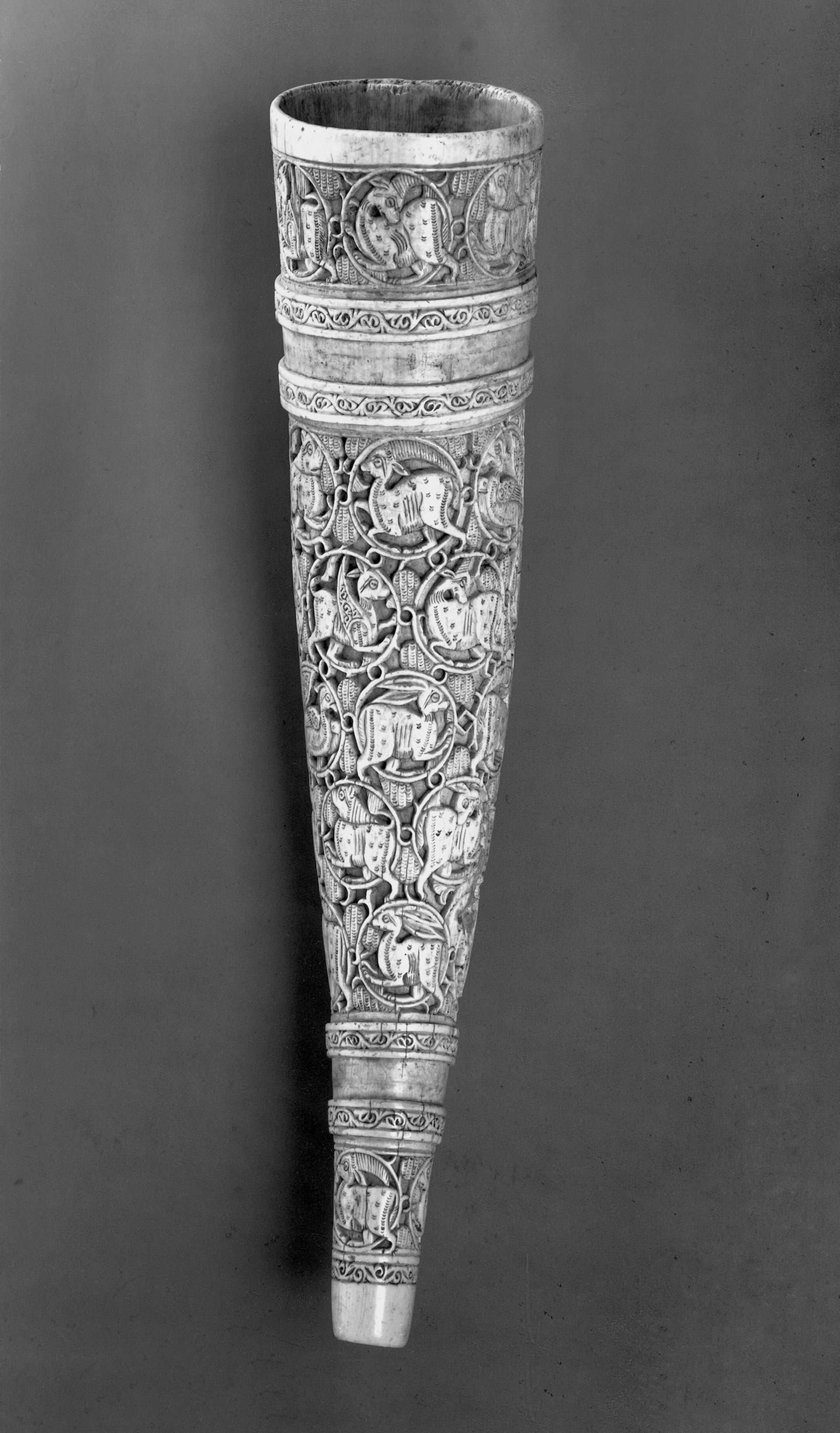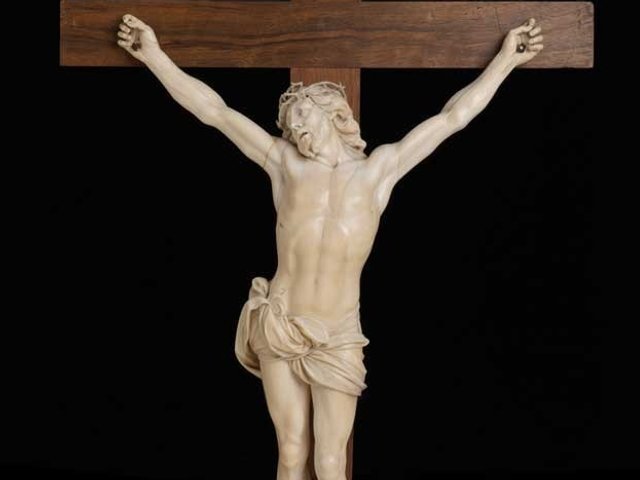It is a century since Adolph Goldschmidt began the great series, Die Elfenbeinskulpturen, which achieved six volumes between 1914 and 1934. Naturally, they were mostly concerned with ivories that could be considered Gothic or Nordic, or, at worst, Frankish. It was not until 1971 that Ernst Kühnel’s volumes on Islamic ivories were published posthumously. Kühnel identified the elaborately carved horns which had graced many a cathedral treasury as “Saracenic”, but he located their origin as southern Italy. Avinoam Shalem has argued persuasively for broader views of a common Mediterranean culture, where stylistic trends and craftsmanship techniques might spread between East and West; in this monumental work, Die mittelalterlichen Olifante: die Elfenbeinskulpturen, which covers all the medieval horns he has been able to trace, he sets out his stylistic and iconographical assessments of this wide-ranging form.

Shalem’s categories are perhaps unnecessarily complex. He assigns a group of 13 11th-century horns in the Fatimid style to possible origins in Egypt, southern Italy or Sicily. Five more are considered as definitely from Egypt. More than 20 pieces from the same period are then placed in a different class described as “archaicising” or in the antique style. We have another section for “hybrids” from southern Italy or Sicily, and some related pieces in “high Medieval” style, then a small number of central European and Nordic origin, and, finally a group without carved or incised décor. Appendices include two Coptic fragments, some Scandinavian walrus ivory and six horns of 16th-century or late Medieval date.
Craft as art
A general introduction includes enlargements of some of the arguments for regarding “craft objects” as a serious art form which Shalem has made previously; it is sad that he still feels obliged to mount a defence of the aesthetic value of such work. More specifically, the catalogue gives extensive details on every entry, including provenance. Shalem gives extensive reasons for his assignations, including profuse illustrations from comparable wooden and stone carvings, and there are sections on techniques, science, purposes and legends. The reader could ask for no more information on the subject.
But this monumental work raises a question about how that information is best conveyed. No doubt the publishers wanted to align this with other volumes in the series, but this is grandiose; a volume of plates, over 18in high, is awkward to consult. In some cases, old photographs are the only means of identification, but one wonders why, in the case of a volume which must have been very expensive to produce, more modern technology would not have been preferable. I would be the last to decry the book form, but it has one huge disadvantage: it is necessarily sequential. Shalem has had to resort to the old arrangement which he hoped to escape: one essentially based on regional attributions. An electronic system would allow infinite “shuffling” as the searcher required, with the bonus of being able to scan minute details and study the object as if in three-dimensional space. However, the publishers have conceded to technology with a final coup de foudre: the set comes with a CD of musicians from the Staatsoper Unter den Linden actually blowing two of the horns—one from a cathedral treasury from the mid-11th century, the other from the 16th century. The sounds make the hairs stand up on the back of one’s neck.

Die Olifante: die
Elfenbeinskulpturen
Avinoam Shalem with Maria Glaser
Deutsche Verlag für Kunstwissenschaft, 512pp, two volumes and CD, €250 (hb); in German only
Jane Jakeman has a doctorate in Islamic art and architectural history from St John’s College, Oxford. She has lectured on Islamic art and travelled widely in the Middle East, and has been on the staff of the Bodleian and Ashmolean libraries


